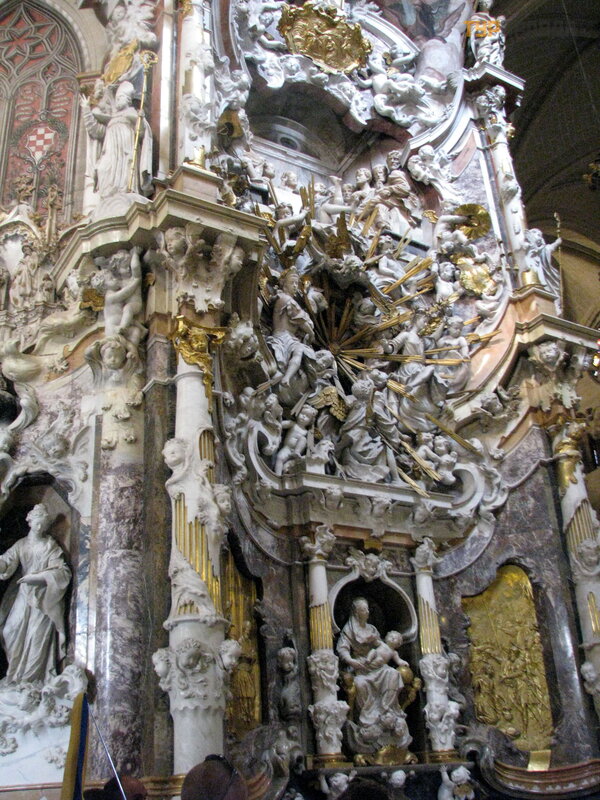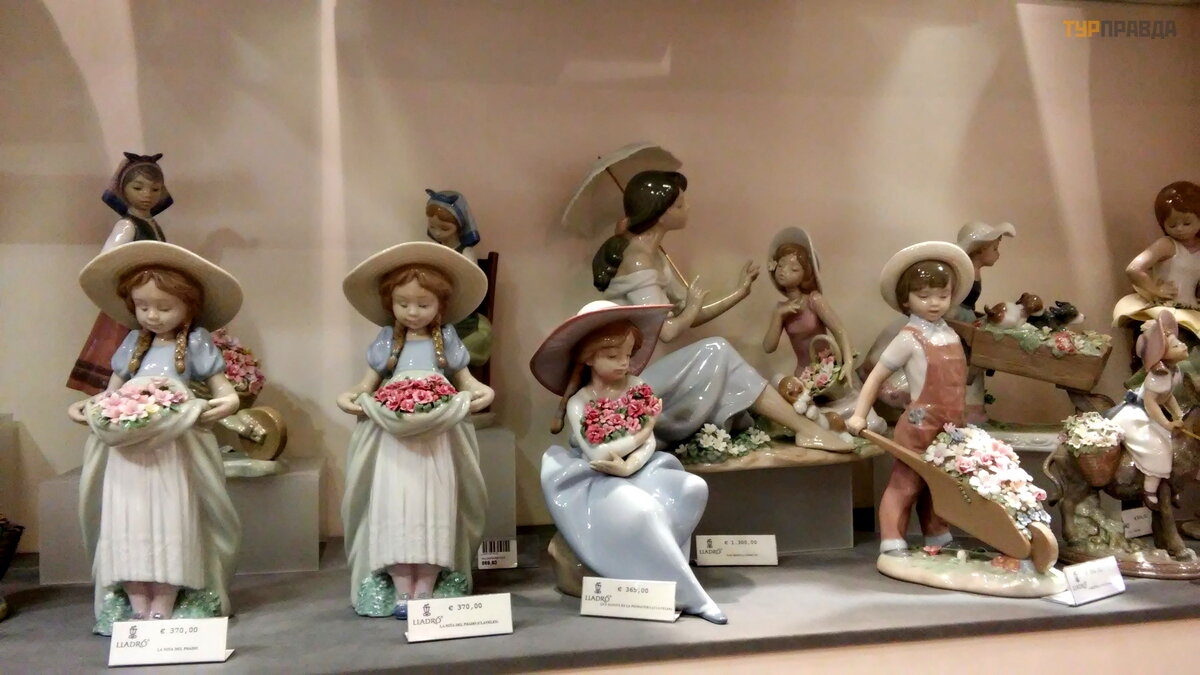Toledo. Secrets of the diverse city (from the early)
Exactly five years ago, we traveled around Spain, and we had a chance to visit one amazing city that struck my imagination and was remembered more than others. This is the former capital of Spain - a city of special destiny Toledo. Various historians and artists for many centuries sought to comprehend the secret of this diverse city, which was a place where the culture and ideas of many peoples merged. But Toledo still zealously guards its secret, and this secret must be comprehended by yourself. After all, Toledo is history itself, the history of all of Spain. And in my story, I will try to extend this small guiding thread of Ariadne and show travelers what you can see in Toledo in one day.
Two thousand years have passed since the Roman legions led by Marcus Fulvius conquered the city and opened the history of its existence with the words "Тoletum ibi parva urb erat, sed loco munita".
Even at the entrance to the city, from afar, we have a view of a large cliff located between two rocks, on which a medieval city is built, and below, meandering, the Tagus River flows smoothly.
And at the entrance to the city we are met once by the ruler of Castile Alfonso VI, nicknamed the Brave for his courage in liberating the city from the Moors during the reconquista. It was under his leadership that in 1085 a detachment of Christians entered the city and expelled the Emirate of Toledo. However, the city still remained a border town, as Almohad raids continued periodically.
The most convenient way to get to Toledo is through the Bisagra Gate, presented to the city by Emperor Charles V in the 16th century in connection with the convocation of the Cortes. The arch of the gate is crowned by the imperial coat of arms - the double-headed eagle of the Habsburg dynasty. In general, wherever you look, the Habsburgs are everywhere.
From Bisagra Gate, the city wall stretches to St. Martin's Bridge.
The bridge connects the city with the west, i. e. with the Toledo Mountains, from where they brought granite for construction, coal, food and cattle. And it got its name from the parish of St. Martin, located nearby. Crossing the bridge, the Hawthorn Gate takes you to Toledo's most populous quarter, the Jewish Quarter.
You can see Church of St. John of the Catholic Kings on a raised platform.
This is a monastery, and it owes its origin to the decisive battle for the Castilian throne, which was won by Isabella and Ferdinand, later nicknamed the Catholic Kings. In honor of such an event, Queen Isabella decides to build a monastery, consisting of a temple and a pantheon.
The interior of the Cathedral with the iconostasis:
Very beautifully decorated presbytery:
But the largest temple in Toledo, as well as in the whole Christian world, is the Cathedral.
The history of the creation of the Cathedral is legendary, for its construction began in honor of the turning point in the history of the Reconquista, when the Christians dealt a final crushing blow to the Almohads who ruled the island at that time. In Arabic chronicles, this battle is referred to as "Misfortune", but the winners, led by Alphonse VIII, lay the first stone in 1221 and begin the construction of the grandiose Cathedral, which will be completed only after 500 years.
The Cathedral is stunning from all sides, and what is even more stunning is that the architectural composition of the Cathedral is attributed to two masters whose identity is unknown! There is an assumption that the name of the master was Martin, and he was a Frenchman, and the presence of the Mudé jar style in the architecture of the cathedral suggests that it was built by a Toledo man, and his name was Pedro Perez.
The highest part of the Cathedral is a hundred-meter tower, inside of which is the main bell. The second tower is crowned with an octagonal drum with a beautiful dome by Jorge Manuel (son of El Greco). And between the towers there is a facade with three portals.
With all its portals, it does not fit into the lens of any camera, so you can photograph it from different angles in parts.
Well, perhaps, on the main facade, the portals look something like this:
In the center is the portal of Forgiveness, that is, passing through it, you receive an indulgence that absolves all sins. On the right is the portal of the Court, as here we see the image of the Last Judgment. And the left portal represents the Gates of Hell. That is, having received forgiveness, you end up on a terrible judgment, from there to the gates of hell, but where are the gates of Paradise? Or, a priori, all go to hell to burn on a terrible fire? Yes, I am not happy with such a prospect.
The Portal with Lions is considered the most beautiful, as it was built by Flemish craftsmen, who were considered the most skilled sculptors and architects at that time.
The composition of the inside of the portal is crowned by the Organ of the Emperor.
And in general, inside the Cathedral looks no less grandiose than outside:
The most beautiful work of art is the main iconostasis (Retablo) located in the center of the Cathedral. It consists of fifteen large sculptural groups carved from larch and painted with gold.
Sunlight enters the Cathedral through a light window (lucarne), gently illuminating all the sculptural compositions, and most importantly, the lower part of the iconostasis with the figure of the Virgin Mary.
And at the top of the amazingly beautiful stained-glass windows:
And no less amazing ceilings:
And thisSacristy is the largest museum in the cathedral. The spacious hall of the Sacristy is crowned with a vault painted by the Neapolitan artist Luca Giordano (he gained his fame due to the fact that he could work with both hands at the same time and simultaneously paint walls and ceilings).
In the central part of the hall, there is a marble altar, over which hangs one of the masterpieces El Greco's "Taking off the clothes of Christ".
Another amazing creation is the so-called Chorus, the entrance to which is protected by an elegant lattice:
The lower row of Choir seats is a work of art and the first work of Rodrigo Alemá n. The backs of the chairs are made of walnut and display the chronicles of the battles.
Inside the unique ensemble of the Choirs is the Primus altar and the marble figure of the White Madonna, dating back to the 14th century.
The Spaniards, like the Italians, have their own innumerable treasures. And they are hidden in the same treasuries of cathedrals. Toledo Cathedral was no exception.
Cathedral Treasures
The most magnificent work of precious metal in the Christian world is the miraculous Pyramid used on the day of a great religious procession.
In a small display case on the left - Imperial crowns:
Another masterpiece is the marvelous volumes of the Biblewith commentaries by St. Louis. The parchment pages of each volume are decorated with about three thousand miniatures.
It is impossible to describe and show all the treasures stored in this museum, but all of them truly represent not only artistic, but also historical value.
If you ever visit Toledo, don't miss this magnificent Cathedral.
Another monumental structure rises on the hill, dominating the rest of the houses. This is the Royal Alcá zar.
But, to our great regret, we didn’t get to the palace, although it houses no less unique museums and treasuries.
Well, we are going for a walk along the old streets of the city, here, indeed, time seems to have stopped and froze in the Middle Ages.
Shops are everywhere where, just like many centuries ago, townspeople bought simple food - cheese and bread:
And many craft workshops where you can see and even buy unique things made of metal, wood and porcelain:
Watching the work of the master is very interesting, he creates, and soon a beautiful product will turn out from an ordinary plate.
And of course, let's go look at the knight's armor and ammunition, where without it, my tourist companion is not interested in plates. But sabers and muskets - yes!
And the knights!
In general, my dear readers, everyone should reveal their secret of Toledo, getting lost in the labyrinth of its streets and seeing the magical charm in the evening twilight. Or vice versa, at dawn, watch the sun rise, gilding its granite impregnable walls.












































































































